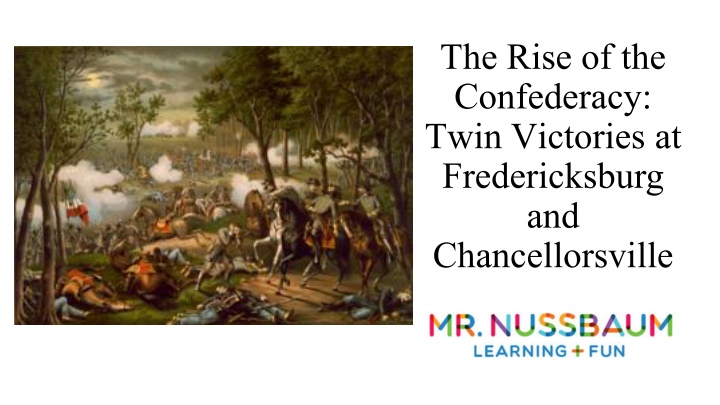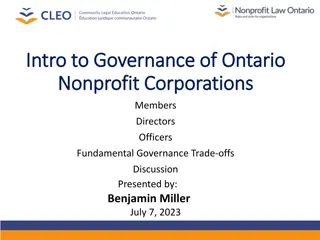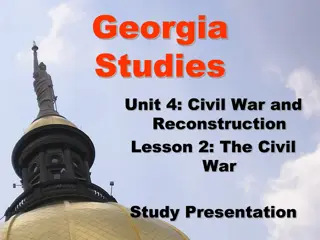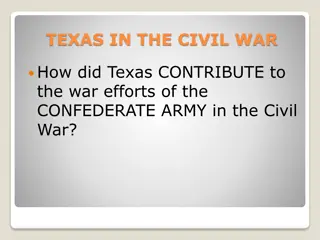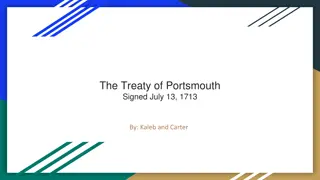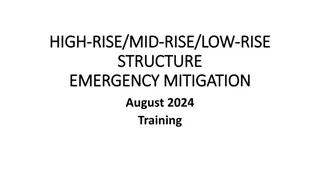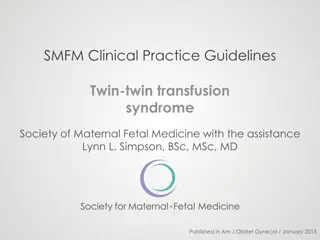Twin Victories in the Rise of the Confederacy: Fredericksburg and Chancellorsville
The Civil War in late 1862 saw pivotal moments as the Union faced setbacks at Fredericksburg and Chancellorsville. After the Battle of Antietam, President Lincoln's Emancipation Proclamation set the stage for a shifting tide. The Union's struggles at Fredericksburg under Burnside led to Hooker's unsuccessful command at Chancellorsville, where Lee's strategic brilliance secured another Confederate triumph despite being outnumbered. These battles marked crucial turning points in the war's progression.
Download Presentation

Please find below an Image/Link to download the presentation.
The content on the website is provided AS IS for your information and personal use only. It may not be sold, licensed, or shared on other websites without obtaining consent from the author.If you encounter any issues during the download, it is possible that the publisher has removed the file from their server.
You are allowed to download the files provided on this website for personal or commercial use, subject to the condition that they are used lawfully. All files are the property of their respective owners.
The content on the website is provided AS IS for your information and personal use only. It may not be sold, licensed, or shared on other websites without obtaining consent from the author.
E N D
Presentation Transcript
The Rise of the Confederacy: Twin Victories at Fredericksburg and Chancellorsville
Where are we in the Civil War? The Confederate attempt to assert its will in the North was thwarted at Antietam, the bloodiest one-day battle in American history. Foreign recognition for the Confederacy would have to wait. Following the Battle of Antietam, which was actually a tactical draw, President Abraham Lincoln issued his landmark Emancipation Proclamation, freeing all slaves in enemy territory and guaranteeing the end of slavery should America win the war. We start in late 1862. We start in late 1862.
December 1862 President Lincoln had grown tired of General McClellan s inaction, excuses, and insubordination, and replaced him as Commander of the Army of the Potomac with General Ambrose Burnside. Following Antietam, Union forces endeavored to move on the Confederate capital of Richmond. A move on Richmond first required Union forces to defeat Confederate armies that had collapsed north of Richmond along the Rappahannock River in and around the town of Fredericksburg. Ambrose Burnside
December 11-15 1862 As the Army of the Potomac neared, Confederate General Robert E. Lee ordered his forces to occupy the high ground around Fredericksburg. Union General Burnside ordered repeated assaults on the heights, resulting in mass casualties for both sides. Union forces were unable to dislodge the Confederates from their positions and hence, could not make progress toward Richmond. A truce was called on December 14th, so both sides could tend to the injured and dead. Burnside made the decision to retreat to the north side of the Rappahannock River. The Battle of Fredericksburg, thus, was a decisive Confederate victory and an embarrassment for the Union.
Take II Following the destruction at Fredericksburg, Lincoln appointed Joseph Hooker as Commander of the Army of the Potomac. The Union strategy continued to center on the Confederate capital of Richmond. Lincoln believed that if Richmond could be taken, the war would quickly end. Unfortunately, Hooker was inexperienced, brash, and ill-suited for such a massive responsibility.
The Plan Hooker decided to launch a massive assault on Confederate positions from both the front and rear. Hooker s Army was twice the size of Lee s Army of Northern Virginia. The battle would center just a few miles from the Battle of Fredericksburg, at a tiny hamlet known as Chancellorsville.
Confederate Dominance Robert E. Lee, realizing he was outnumbered, decided to split his army, and attacked Hooker with about 80 percent of his forces. The inexperienced Hooker was likely confused by Lee s maneuvers, and inexplicably ordered his forces to retreat and take defensive positions during Lee s assaults. On May 2, 1863, Confederate General Stonewall Jackson routed Union forces, who were eating dinner, crushing its right flank! That night, however, Jackson was accidently shot in the arm by one of his own men. He would develop pneumonia and die a week later. Jackson s death was a major blow to the Confederate Army.
Union Incompetence Despite the setbacks, Union forces still had a major advantage in manpower at Chancellorsville. Hooker s army, which had occupied the high ground at Hazel Grove, numbered 76,000 compared to only 43,000 men available to Lee. Hooker (again) inexplicably ordered his men off the high ground, which was immediately occupied by Confederate forces with their heavy guns and artillery. Confederate forces engaged in a massive attack on May 3rd, aided by their newly installed guns, which sparked fires in the nearby forests, and which overwhelmed their counterparts. Hooker ordered a retreat north of the Rappahannock River, resulting in a second decisive Confederate victory.
Effect of the Battle Chancellorsville is often called Lee s Greatest Victory. Lee believed his army was invincible and that it was God s will for his army to defeat the enemy wherever it fought. Lee endeavored to invade the North again, setting the stage for the epic Battle of Gettysburg. Joseph Hooker would be replaced as Commander of the Army of the Potomac by George Meade. Support for the continuation of the war began to wane in the North.
Activities Battle of Chancellorsville Reading Comprehension - Online - This activity requires includes a reading passage and seven multiple choice questions. It gives immediate feedback . Battle of Chancellorsville Reading Comprehension - Printable - This activity requires includes a reading passage and seven multiple choice questions. The answers are included in the PDF. Lee's Greatst Victory - Writing Prompt - This activity requires students to relate to Lee's "Greatest Victory" at Chancellorsville, by describing their greatest moment at sports, music, dance, or even video games. Famous Last Words -This activity describes Stonewall Jackson's famous last words after being shot at the Battle of Chancellorsville and challenges students to pen their own final words, or, those of a character in movies or literature.
